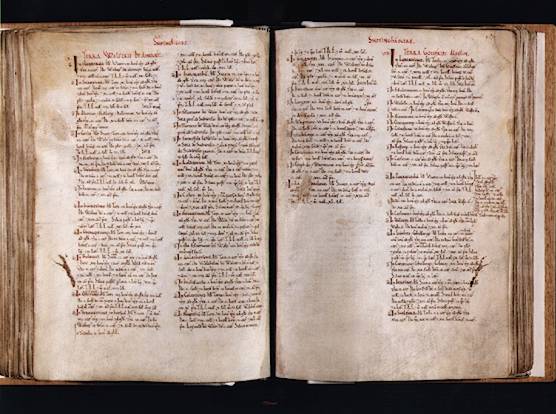History of the Village
Chalfont St Giles in the Domesday Book
The Domesday book is one of the few historical records whose name is familiar to most people in this country, and is our earliest public record, the foundation document of the national archives and a legal document that is still valid as evidence of title to land.
Based on the Domesday survey of 1085-86, which was drawn up on the orders of King William I, it describes, in remarkable detail, the landholdings and resources of late 11th century England, demonstrating the power of the government machine in the first century of the new Millennium and its deep thirst for information. It was an exercise unparalleled in contemporary Europe and not matched in its comprehensive coverage of the country until the Population Censuses of the 19th century, although Domesday itself is not a population census and the names that appear in it are mainly those of land-holders.
Providing definitive proof of rights to land and obligations to tax and military service, its 913 pages and two million Latin words describe more than 13,000 places in England and parts of Wales.
Nicknamed "Domesday" Book by the native English, after God's final Day of Judgement when every soul would be assessed and against which there could be no appeal, this title was adopted by its official custodians, now the Public Record Office. The official who wrote the Dialogue of the Exchequer in 1179 wrote that "just as the sentence of that strict and terrible Last Judgement cannot be evaded by any art or subterfuge, so, when a dispute arises in this realm concerning facts which are written down, and an appeal is made to the book itself, the evidence it gives cannot be set at nought or evaded with impunity". It was a landmark in the triumph of the centralised written record, once set down fixed forever, over evolving local oral traditions.
Domesday was never a single volume but originally two books, Great Domesday and Little Domesday, a longer version covering the counties of Essex, Norfolk and Suffolk that was never written up into the main volume. It is now five volumes having been re-bound in 1984 to improve its preservation for another millennium.

